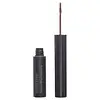What's inside
What's inside
 Key Ingredients
Key Ingredients

 Ingredients Side-by-side
Ingredients Side-by-side

Isododecane
EmollientTrimethylsiloxysilicate
EmollientCeresin
Emulsion StabilisingDextrin Palmitate/Ethylhexanoate
EmulsifyingTalc
AbrasiveIsobutylmethacrylate/Bis-Hydroxypropyl Dimethicone Acrylate Copolymer
Microcrystalline Wax
Emulsion StabilisingDisteardimonium Hectorite
StabilisingCI 77499
Cosmetic ColorantPolypropylsilsesquioxane
Propylene Carbonate
SolventHydrogenated Polyisobutene
EmollientCI 77492
Cosmetic ColorantCI 77891
Cosmetic ColorantCI 77491
Cosmetic ColorantTriethoxycaprylylsilane
Aluminum Hydroxide
EmollientBHT
AntioxidantIsododecane, Trimethylsiloxysilicate, Ceresin, Dextrin Palmitate/Ethylhexanoate, Talc, Isobutylmethacrylate/Bis-Hydroxypropyl Dimethicone Acrylate Copolymer, Microcrystalline Wax, Disteardimonium Hectorite, CI 77499, Polypropylsilsesquioxane, Propylene Carbonate, Hydrogenated Polyisobutene, CI 77492, CI 77891, CI 77491, Triethoxycaprylylsilane, Aluminum Hydroxide, BHT
Isododecane
EmollientWater
Skin ConditioningTalc
AbrasiveTrimethylsiloxysilicate
EmollientButyl Acrylate/Hydroxypropyl Dimethicone Acrylate Copolymer
Copernicia Cerifera Wax
Vp/Eicosene Copolymer
Polypropylsilsesquioxane
CI 77492
Cosmetic ColorantCI 77499
Cosmetic ColorantPolyethylene
AbrasiveGlyceryl Behenate/Eicosadioate
EmollientCetyl PEG/PPG-10/1 Dimethicone
EmulsifyingDisteardimonium Hectorite
StabilisingCI 77491
Cosmetic ColorantSorbitan Isostearate
EmulsifyingEthyl Hexanediol
SolventPolyisobutene
Pentylene Glycol
Skin ConditioningCI 77891
Cosmetic ColorantCyclopentasiloxane
EmollientPolyhydroxystearic Acid
EmulsifyingPropylene Carbonate
SolventPhenoxyethanol
PreservativeDisodium EDTA
Aluminum Hydroxide
EmollientTriethoxycaprylylsilane
Pentaerythrityl Tetra-Di-T-Butyl Hydroxyhydrocinnamate
AntioxidantIsododecane, Water, Talc, Trimethylsiloxysilicate, Butyl Acrylate/Hydroxypropyl Dimethicone Acrylate Copolymer, Copernicia Cerifera Wax, Vp/Eicosene Copolymer, Polypropylsilsesquioxane, CI 77492, CI 77499, Polyethylene, Glyceryl Behenate/Eicosadioate, Cetyl PEG/PPG-10/1 Dimethicone, Disteardimonium Hectorite, CI 77491, Sorbitan Isostearate, Ethyl Hexanediol, Polyisobutene, Pentylene Glycol, CI 77891, Cyclopentasiloxane, Polyhydroxystearic Acid, Propylene Carbonate, Phenoxyethanol, Disodium EDTA, Aluminum Hydroxide, Triethoxycaprylylsilane, Pentaerythrityl Tetra-Di-T-Butyl Hydroxyhydrocinnamate
Ingredients Explained
These ingredients are found in both products.
Ingredients higher up in an ingredient list are typically present in a larger amount.
Aluminum Hydroxide is a form of aluminum. It can be naturally found in nature as the mineral gibbsite. In cosmetics, Aluminum Hydroxide is used as a colorant, pH adjuster, and absorbent.
As a colorant, Aluminum Hydroxide may add opacity, or reduce the transparency. Aluminum hydroxide is contains both basic and acidic properties.
According to manufacturers, this ingredient is an emollient and humectant. This means it helps hydrate the skin.
In medicine, this ingredient is used to help relieve heartburn and help heal ulcers.
There is currently no credible scientific evidence linking aluminum hydroxide in cosmetics to increased cancer risk.
Major health organizations allow the use of aluminum hydroxide in personal care products and have not flagged it as a carcinogenic risk at typical usage levels.
Learn more about Aluminum HydroxideCi 77491 is also hydrated iron III oxide. It's sole purpose is to give a red/pink hue to products.
Iron III oxides are classified as inorganic chemicals for coloring.
Synthetically created Ci 77491 is considered safer than those naturally found. This is because the synthetically created version may contain less impurities. Iron oxides are generally non-toxic and non-allergenic.
Learn more about CI 77491Ci 77492 is also hydrated iron III oxide. It's sole purpose is to give a yellow hue to products.
Iron III oxides are classified as inorganic chemicals for coloring.
Synthetically created Ci 77492 is considered safer than those naturally found. This is because the synthetically created version may contain less impurities. Iron oxides are generally non-toxic and non-allergenic.
Learn more about CI 77492Ci 77499 is also hydrated iron III oxide. It is created from mixing red and black iron oxides. This helps give shades of darkness to a product.
Iron III oxides are classified as inorganic chemicals for coloring.
Ci 77891 is a white pigment from Titanium dioxide. It is naturally found in minerals such as rutile and ilmenite.
It's main function is to add a white color to cosmetics. It can also be mixed with other colors to create different shades.
Ci 77891 is commonly found in sunscreens due to its ability to block UV rays.
Learn more about CI 77891Disteardimonium Hectorite comes from the clay mineral named hectorite. It is used to add thickness to a product.
It can also help stabilize a product by helping to disperse other ingredients.
Hectorite is a rare, white clay mineral.
Learn more about Disteardimonium HectoriteIsododecane is a fragrance, emollient, and solvent.
As an emollient, it helps your skin stay soft and hydrated. Emollients help trap moisture into your skin.
Isododecane's role as a solvent makes it a great texture enhancer. It spreads smoothly on skin and does not leave a sticky feeling behind. Isododecane also helps prevent color transfer in makeup products.
Isododecane is not absorbed into skin.
Learn more about IsododecanePolypropylsilsesquioxane is a synthetic silicone resin used to create a flexible, water-resistant layer on the skin or hair.
This helps improve the wear and transfer resistance in products like foundations, sunscreens, and colored makeup without feeling greasy.
This ingredient is a solvent. It helps dissolve active ingredients and alter the texture of products.
Propylene Carbonate is commonly used in makeup and with clay, such as montmorillonite or bentonite.
Studies show this ingredient to be safe for cosmetics. When it is undiluted, it can cause skin irritation. (It is always diluted in skincare and makeup). This ingredient is water-soluble.
Propylene Carbonate is created from propylene glycol and carbonic acid.
Learn more about Propylene CarbonateTalc is a clay mineral. It helps absorb moisture and improve the texture of products. Like other types of clay, Talc can have a slight exfoliating effect on skin. Talc can be added to increase the volume of products.
Some Baby powders are made by combining talc with corn starch. The word "talc" comes from Latin and originates from Arabic. Talc is a mineral commonly found throughout the world.
If you have any concerns about using talc, we recommend checking out the FDA's official page.
Learn more about TalcTriethoxycaprylylsilane is a silicone used to bind and stabilize ingredients.
As an emulsifier, it helps prevent ingredients from separating. This can help elongate the shelf life of products.
Triethoxycaprylylsilane is often used to coat mineral sunscreens ingredients to help give a better feel. It also helps reduce oxidative stress in sunscreens.
Learn more about TriethoxycaprylylsilaneThis silicone is an emollient. Emollients create a thin film on the skin to prevent moisture from escaping.
It is not soluble in water and helps increase water-resistance in products.
According to a manufacturer, it can blend seamlessly with silicone oils, such as Cyclopentasiloxane.
Learn more about Trimethylsiloxysilicate